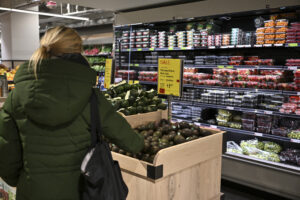NEW YORK – Lifestyles involve having convenience stores within reach — if you go to work daily, don’t drive around the city and don’t have a maid to do the shopping for you. Shopping for a pet is easier than shopping for yourself in the Columbus Ave area between 65th and 70th Street. Obviously many neighborhoods experience the same but this is where I live, full of misguided landlords. Of course you can go north of 72nd Street or down to the Time Warner mall at 59th street. But it’s not the same thing if you are lugging goods or wheeling a cart and expect a facility to be open 24 hours. The number of blocks one has to walk to get to a food store is important. Without them, the character of the neighborhood changes. A lotta latte Even making do with whatever Starbuck’s is offering is in the past. The once very crowded store at 67th Street and Columbus Avenue closed last year. The rent was reported to have climbed to well over $100,000 a month. That’s a lotta latte. The store is still partly vacant as is Gracious Homes down the street, filled with linens, lighting, household goods, cleaning supplies, last minute gifts and great sales people. You can’t really shop locally if the shops can’t afford to stay in business — not because they have no patrons but because the landlords are looking at short-term results. Vacant properties can get a tax write-off and landlords hope a new high rent will then make up for the vacancies. When it began It started in 2011 when Barnes and Nobles on 66th Street and Broadway closed. The 83rd street store is does not offer the same extensive merchandise. Since then: Food Emporium closed in 2013 at Broadway and 68th Street, replaced by Lowe’s; restaurants Nick and Toni’s and, Telepan are shut down. So are boutiques, including Helmut Lang, the large Theory shop and Burberry, substituted by unattractive clothing stores. Recently, Trevi nails, in business for at least 15 years on Broadway, shut its doors. It is understandable that property owners want to make a profit but they are not looking at long-term development. How many people with children want to pay high rent or maintenance and then walk 10 blocks for some basic goods? And forget the local Mom and Pop shops that knew what you wanted. They folded years ago. High rise buildings are popping up without bodegas or supermarkets, nearby. Running out late in the evening for that extra pack of diapers or some milk or something one forgot earlier is what many appreciate in Manhattan neighborhoods. In New York City, distance is measured in blocks. The number of blocks a New Yorker has to trek lugging an armful of goods could mean the difference between a great neighborhood and an inconvenient one. It’s depressing,” said Charles Platkin, the executive director of the New York City Food Policy Center, at Hunter College. “When a supermarket in your area closes, it feels like you’re moving backward.” But hey — one can now walk from bank to bank, from Duane Reed to Duane Reed.















